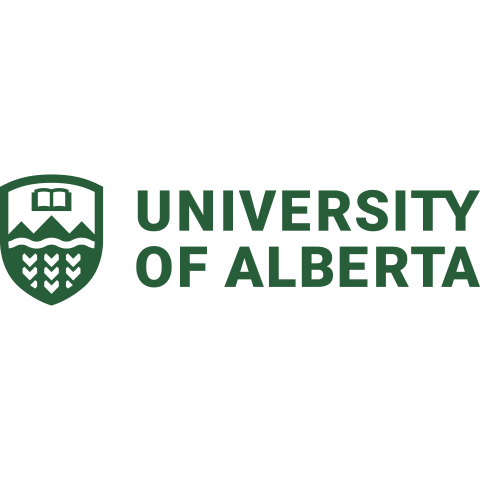
Restructuring a university, part two
When funding pressures made it clear that the University of Alberta had to change, it overhauled its entire way of working. Here, president Bill Flanagan explains how they did it
You may also like
Popular resources
In 2020, our university began a massive engagement effort across the institution. The aim was to create the University of Alberta for Tomorrow (UAT).
One key outcome from this initiative was as bold as the enterprise itself: putting in place an entirely new operating model for the University of Alberta (U of A), which included the creation of three new colleges.
- Restructuring a university, part one
- Spotlight: rethinking the university campus
- How to be an empathetic leader during times of change
Administrative functions that were widely distributed across every academic department were rationalised and centralised. Instead of each faculty designing and delivering its own administrative services with little guidance, the new operating model struck a better balance: functions that were common across the institution were centralised, while faculties and departments retained bespoke functions. With a comprehensive redesign of all our administrative functions, in only 24 months, we permanently eliminated more than C$100 million (£60 million) in administrative costs.
In addition to reducing duplication and improving economies of scale, this took a major administrative weight off the shoulders of deans. Faculties could now focus more of their time and resources on teaching, learning and research.
The process had begun with consultation. Staff and faculty participated in hundreds of meetings and workshops, helping yield a clearer picture of which activities occurred where across the vast institution. Members of the university’s senior leadership, faculty, staff and student associations – from multiple disciplines, employment groups and campuses – played key roles in designing new work models, guiding decisions, questioning proposals and leading change. Committees – made up of some 119 staff – examined and made recommendations on various aspects of change.
With a vision to operate as One University, the new operating model restructured 13 faculties under three new colleges: a College of Social Sciences and Humanities, a College of Natural and Applied Science and a College of Health Sciences. The idea is to use the colleges to identify, seize and nurture opportunities for enhanced collaboration among their constituent faculties and between the colleges. We left three other faculties as stand alone, each with a distinct community or regional focus.
The college model opens up significant ways to take advantage of economies of scale and advance interdisciplinary teaching and research. This will increase our ability to deliver a consistent student experience and enable us to respond more quickly to international and interdisciplinary research opportunities with a global reach.
Lest it be seen and behave as a paper tiger, the college model has been backed up with a significant shift in academic leadership. Each college is headed by a college dean, who has also been delegated authority as a vice-provost. The college dean/vice-provost will have considerable scope to advance their college’s objectives and leverage the strengths of their member faculties. (The colleges were organised such that each college’s member faculties broadly share a disciplinary focus.)
Importantly, however, the U of A’s new college model preserves the role and authority of faculty deans. They continue to be primarily responsible for the delivery of academic programmes within their faculty, the hiring and mentoring of faculty members, and alumni relations and fundraising.
The structure, which keeps existing faculties and the role of the faculty dean intact, resulted directly from the views heard during engagement meetings. Rather than amalgamate faculties into fewer larger faculties (the original proposal), there was a broad consensus in favour of preserving faculty identities. There was also a strong sense of the importance of a faculty continuing to lead its own academic programme. Only the faculty members led by the dean have the expertise within their discipline to lead the development and support of the faculty’s academic programme. Only they are close enough to the faculty and the discipline to do this effectively.
The university’s new interim provost, Verna Yiu, having recently served as the president and CEO of Alberta Health Services, is well suited to the task of unleashing the full potential of an institution that has just undergone a massive reshuffling of its organisational chart. (The huge provincial health authority had seen a major centralisation effort when Dr Yiu joined it in 2012.)
The past two-and-a-half years have been challenging, but I am privileged to work with a team united in our commitment to excellence in learning, discovery and citizenship. I know we can build from this position.
Maintaining an optimistic outlook has been key through the changes under UAT; to say the transition has been difficult would be an understatement.
No organisation would choose to do what we did the way we did it in the time frame we had. Given the depth of the cuts, without the urgent need to balance our budget, a transformation of this size and scale would have taken well over five years.
Although the toughest parts of UAT are in the rearview mirror, work remains to be done on improving service and satisfaction levels with the centralised administrative structure. As expected, there have been many bumps. But we are moving forward.
The past few years have been among some of the hardest in the university’s history, but today I think we’re as strong as we’ve ever been.
The latest 2022 Shanghai Academic Ranking of World Universities (ARWU) placed the University of Alberta at 92nd in the world. We have returned to the top 100 universities in the world.
The university also made an impressive showing in the 2022 Times Higher Education Impact Ranking, which assesses universities against the United Nations’ Sustainable Development Goals, including ending poverty, ending world hunger, climate action, and sustainable land use. Of more than 2,000 universities worldwide, the U of A ranked number 11.
Energising that impact is what UAT has largely been about. Ours is among a handful of global universities with the research and teaching strength to make world-changing contributions to the greatest challenges facing the globe, including climate change, developing sustainable energy systems, global food security, harnessing the potential of artificial intelligence to better society, and developing novel vaccines and therapeutics to face global health challenges.
The UAT transformation has bolstered that strength. Proportionally more funding and resources than ever before are going directly into classrooms and research labs, generating greater impacts. We are better positioned to meet the modern expectations of students, employers and funders, and to continue being a key driver of economic opportunity and societal evolution.
What’s more, the restructure has put the conversation about the future of universities front and centre: their cost, value and continued relevance. Canada’s post-secondary institutions may want to have a closer look at what’s happened in Alberta’s capital, Canada’s gateway to the north.
Bill Flanagan is the president and vice-chancellor of the University of Alberta.
If you found this interesting and want advice and insight from academics and university staff delivered direct to your inbox each week, sign up for the Campus newsletter.





Comments (0)
or in order to add a comment